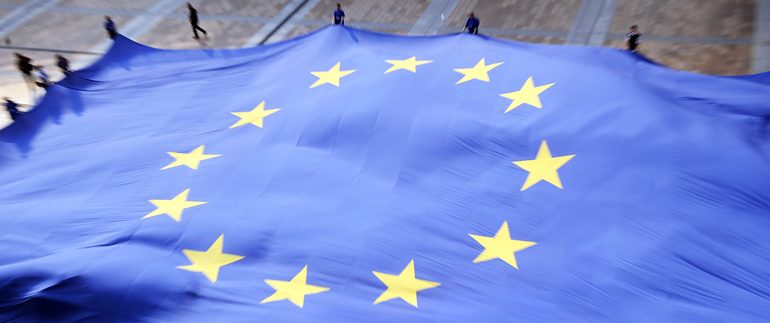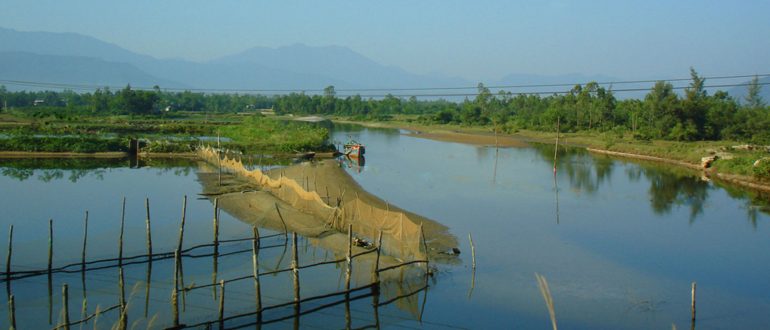Global Health Diplomacy
In a globalized increasingly complex and interdependent world health has been found to be a critical factor for success in foreign affairs. In the following we will look at some definitions of Global Health Diplomacy, analyze characteristic examples for interactions of health and diplomacy and discuss the challenge of how to best bring together interests in the fields of foreign policy, development aid and health.
1. Global Health Diplomacy – a term gains momentum
After his reelection in November 2012 President Obama made a quite indicative move by creating a new position at the State Department – the Office of Global Health Diplomacy.
In December last year the Office was set up and described its main task as “to guide diplomatic efforts to advance the United States’ global health mission to improve and save lives and foster sustainability through a shared global responsibility.” Ambassador Eric Goosby, already U.S. Global AIDS coordinator, was appointed to lead the new office.
The need to maintain and foster the Global Health efforts of the U.S. government as one of the biggest in the field is widely accepted. Nevertheless, one might argue that adding offices and fancy names to already vast bureaucratic structures will just complicate efforts of already existing institutions, plans and initiatives.
However, such assumption falls short of profound analysis. While the term Global Health has been used and defined for decades by institutions mainly dedicated to health such as the World Health Organization, the creation inside the state department and the addition of the word “diplomacy” mark a shift in paradigm. In fact the field of Global Health Diplomacy is increasingly establishing itself as a pillar of “traditional foreign affairs” with its own institutions, researchers and policies. Countries as diverse as Switzerland, Japan, Norway and UK have agreed on national Global Health strategies and partly set up specialized offices.
In order to understand better what mutual benefits Global Health Diplomacy brings to the world of international relations it might be helpful to look at the origins of the term. Global Health Diplomacy has been defined by Ilona Kickbusch, professor at the Graduate Institute for International Development studies and one of the most prominent scholars in that field, as the “multi-level and multi actor negotiation processes that shape and manage the global policy environment for health”.
The implementation of health as a key element of foreign policy was reinforced by the Oslo ministerial declaration – global health in 2007, which was written by the seven ministers of foreign affairs of Brazil, France, Indonesia, Norway, Senegal, South Africa, and Thailand. It aims at “broadening the scope of foreign policy”, more precisely it emphasizes that “life and health are our most precious assets.” Then it states: “There is a growing awareness that investment in health is fundamental to economic growth and development. It is generally acknowledged that threats to health may compromise a country’s stability and security.”
The process of globalization has lead to an increase in interdependencies and helped bring this approach to the overarching field of foreign affairs with its various policies. The signing countries of the Oslo declaration have realized that most health threats do not stop at political borders and play a crucial role in all policies and sectors of society, including security.
Political instability can cause health disasters but moreover a fragile public health situation can be a hazardous threat to stability of countries and regions. A vivid example is the devastating effect of the HIV/AIDS epidemic that destroys whole communities and destabilizes huge areas in sub-Saharan Africa. The 2003 SARS outbreak which put Hongkong into recession, terrified the world for months and made American Chinatowns become “ghettos” as no one dared to enter is another example in case. During the 2010 Pakistan floods Islamic extremists took over as main suppliers of aid and thus strengthened their public standing and recruited new members. And just recently typhoid outbreaks in the rebel-held zones of Syria marked the headlines and reminded us of similar threats like cholera outbreaks in Haiti or many refugee camps around the world.
While death and human suffering are still a central concern we can also identify major impacts on trade and development. Furthermore pressing contemporary issues such as the rise of extremism and migration are accelerated and mark the connection to questions of security policy.
Hence, the 2007 Oslo ministerial-declaration aims to “increase awareness of our common vulnerability […] by bringing health issues more strongly into the arenas of foreign policy […] reinforce health as a key element in strategies for development and for fighting poverty [..]and strengthen the place of health measures in conflict and crisis management and in reconstruction efforts“.
2. Interactions of health and diplomacy – some meat
Looking at some examples of how states make use of global health measures, one realizes that health is already a well-used factor in international affairs.
a) It is well known that China has vast interests in Africa. Mostly food and other resources let them engage in deep political cooperation with a number of African states. An integral part in these endeavors is, next to e.g. infrastructure projects, medical collaboration. According to a 2005 article in China Brief Magazine China has deployed over 15,000 doctors to more than 47 African countries and treated approximately 180 million Africa patients since 1964. While without doubt millions have profited it also helped China gain prioritized access.
b) Health programs do also aim at improving global perception of super powers. The start of the US President’s Emergency Plan For AIDS Relief (PEPFAR) in 2003 coincides suspiciously with the beginning of the Iraq war. Widely perceived as a public relations act to let the US appear to be a good global citizen it in the end turned out to be a majorly successful program nonetheless. Infection rates were reduced significantly and millions of lives have been saved, adding some sort of humanitarian legacy to the presidency of George W. Bush.
c) According to the UN Food and Agriculture Organization, North Korea faces a food deficit of 414 000 tons this year. A situation which leads to severe chronic under- and malnutrition of large parts of the population and is to some extend caused by international sanctions and the fact that food is used as a commodity in anti-proliferation negotiations. South Korea stopped almost all food supplies to the North in 2008 when Lee Myun-bak ended the “sunshine policy”. This could be seen as an example in which a public health threat is used or at least tolerated by security policy and nations when it comes to power-play.
d) Another, more recent example of the entanglements of health and (trade) diplomacy is the Trans-Pacific-Partnership negotiation, which basically aims at establishing a free trade regime among major pacific nations. Repeatedly concerns have been raised that this treaty could, by affecting intellectual property and patent laws, reduce the affordability of important pharmaceuticals to millions and hence favor trade considerations over health – an example that could also proof crucial in any developments towards a Trans-Atlantic-Free-Trade Association. A positive outcome in this regard on the other hand has been achieved by the World Health Assembly resolution on public health and intellectual property (WHA 61.21).
These examples make it hard to distinguish mean and goal. Does foreign policy serve the improvement of health or is health just another conductor of foreign policy? As so often the answer can get more complex. Ilona Kickbusch identifies four ways in which foreign policy and health interact:
“Foreign policy can endanger health when diplomacy breaks down or when trade considerations trump health; health can be used as an instrument of foreign policy in order to achieve other goals; health can be an integral part of foreign policy; and foreign policy can be used to promote health goals. These approaches cannot always be sharply differentiated and are better visualized as a continuum“.
3. How to create win-win situations?
It is evident that the path that should be taken to create win-win situations for all involved in Global Health Diplomacy is narrow. Just recently Doctors Without Borders criticized the German Minister of Foreign Affairs in an open letter for citing humanitarian aid as a tool in the Mali conflict. Not unfoundedly it is argued that entangling humanitarian aid missions in military interventions compromises the neutral role of NGO’s and endangers staff and mission.
But the first and probably broadest challenge is the extreme diversity of actors in that field. Multilateral institutions, national interests, the private sector, NGO’s and academia in health politics, development politics and foreign affairs need to be brought together in terms of technical language, patterns of thinking and interests.
A second question concerns the platforms that such diverse stakeholders need to be most fruitful. The WHO will probably, amid all its problems, still be the place where a lot of frames in terms of health will be set. But as lined out above others like the WTO, the World Bank, the G8/20/77 and private funds like the Global Fund to Fight AIDS, Tuberculosis and Malaria (GFATM) or forums such as the World Economic Forum are also crucial places for conduction of health diplomacy. In fact, ideally, health should be an everyday issue in embassies around the world, wherever stakeholders of different nationalities or interests meet or whenever decisions that frame the world we live in are made.
In that context, the U.S. state departments office on global health diplomacy serves a prime example on how to make health a key-stone element in diplomacy. The US state department as the most powerful, best-endowed and already most comprehensively involved department taking the lead for development and health efforts will create mutual benefits for U.S. foreign policy and the global strive for a better world.
Christian Kraef
Christian Kraef is a fourth year medical student at the University of Münster, former health policy spokesperson of the German Medical Students Association (bvmd) and delegate to the International Federation of Medical Students’ Associations (IFMSA)
Bibliography
U.S. State Department Official Blog, 2012. Strengthening Global Health by Elevating Diplomacy [online] Available at: http://blogs.state.gov/index.php/site/entry/strengthening_global_health_by_elevating_diplomacy [accessed: 23/2/2013]
Jamestown Foundation, 2005. Chinas soft power in Africa: from the “Beijing Consensus” to Health Diplomacy [online] available at: http://www.jamestown.org/programs/chinabrief/single/?tx_ttnews[tt_news]=3901&tx_ttnews[backPid]=195&no_cache=1 [accessed: 23/2/2013]
Kickbusch,Ilona., 2011. Global Health Diplomacy: How foreign policy can influence health. British Medical Journal 342:d3154
Sheryl Gay Stolberg , 2008. In Global Battle on AIDS, Bush creates legacy. New York Times, [online] January 5. Available at: http://www.nytimes.com/2008/01/05/washington/05aids.html?_r=3&oref=slogin&oref=slogin& [accessed: 23/2/2013]
KATZ, R., et. al ,2011. Defining Health Diplomacy: Changing Demands in the Era of Globalization. Milbank Quarterly, 89: 503–523.
McCurry, Justin, 2012. No End in Sight for North Korea’s malnutrition crisis. The Lancet, 379 (9816), p. 602
Ärzte ohne Grenzen Deutschland, 2013. Offener Brief gegen Missbrauch der humanitären Hilfe Berlin, Pressemitteilung/Offener Brief, 29/1/2013



